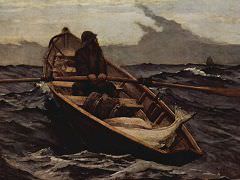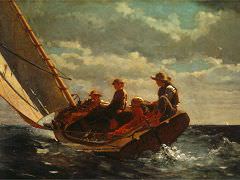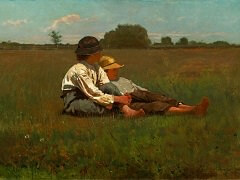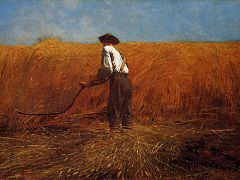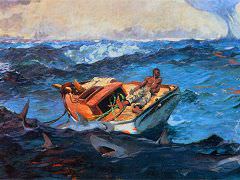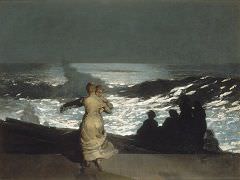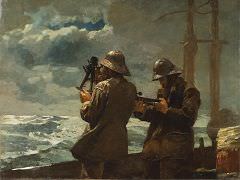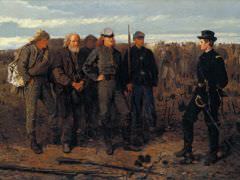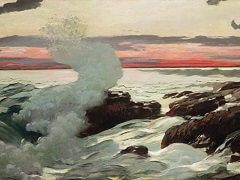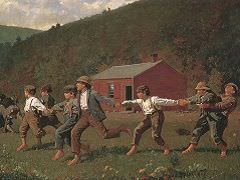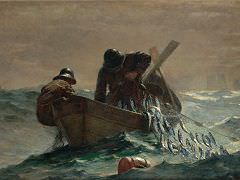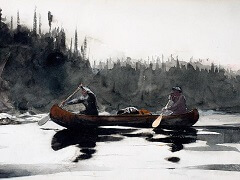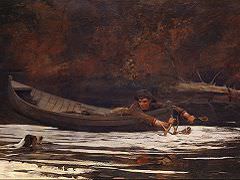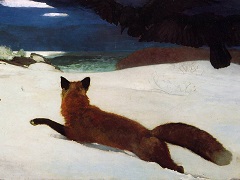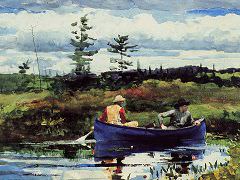The Cotton Pickers, 1876
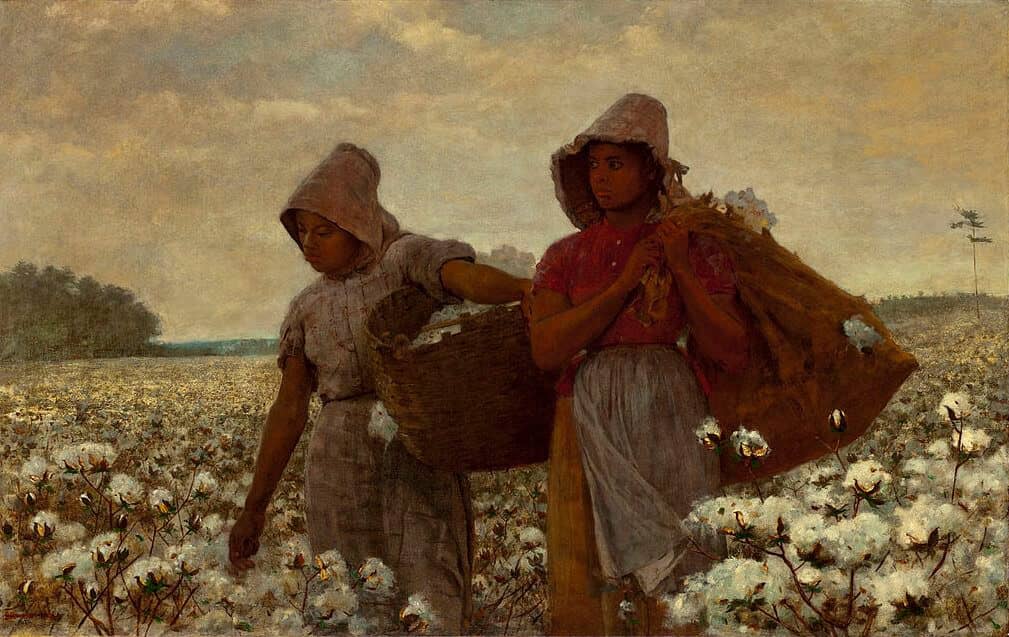
Contemporary reviewers criticized Winslow Homer's paintings of the late 1870s, invidiously contrasting his work with that of Claude Monet, because the women in his pictures were not given clear social roles and statuses; because there frequently was an incongruity between their costumes and their facial expressions; because there was something imprecise and undefined about their activities and situations. In pointing out that Monet's or Renoir's women were seldom guilty of such vagueness of expression and activity, such mysteriousness and lack of social or psychological definition, they were only noticing the qualities that link Homer's central figures with most of Capra's and that make both of them distinctively American expressions. The vagueness, mysteriousness, and lack of definition, the strange staring off to one side, out of the (pictorial or cinematic) frame space at something undefined are registrations of the problematic expression in the world of individual consciousness for both artists, demonstrations of an awareness of what perhaps can never be expressed or rendered except through such mysterious vagueness.
It is at this point that any attempt to assimilate the major artists in the so-called American impressionist tradition to the theories and practices of French Impressionists breaks down. For all of the superficial similarities of attention to color, light, and tonal values, the two traditions operate out of entirely different value systems.
To turn to Winslow Homer's work, one need only compare his Cotton Pickers with Claude Monet's superficially similar Women in a Garden. The Monet paintings might be taken as a literal illustration of an art in which "The fruit trees look like women, and the women look like fruit trees" - that is to say, an art in which there are no awkward discontinuities between the human and the natural, no residue of consciousness that will not be completely translated into public, social, worldly action and expression. To reverse Isabel Archer's dictum, in Monet's painting, clothes - costumes, manners, gestures, and relationships-express the self perfectly. Homer's work, on the other hand insistently calls our attention to the difference between flesh and spirit, the mismatching of physical or social and visionary occupations (literally in Cotton Pickers). Homer creates a gap between the specificity of the realistic details and the mysterious evocativeness of the expressions and oblique glances that makes the uneasy relationship of consciousness to ordinary life the subject of the painting. Monet, in effect, does the opposite, implying that there is no surplus of socially inexpressible consciousness, that everything that can be expressed is perfectly expressed by the costumes, poses, and manners of his figures.

